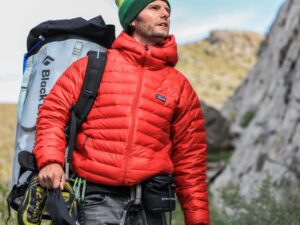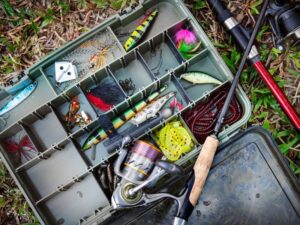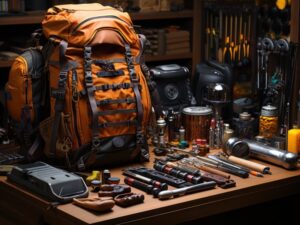Camping gear isn’t just about providing customers with tools for their outdoor adventures, it’s about offering them the means to create memorable experiences in the great outdoors. As distributors, retailers, and brands, your role in stocking essential camping gear goes beyond mere transactions. It’s about facilitating journeys, fostering connections with nature, and enhancing the overall outdoor experience for your customers.
One key aspect that underpins the success of your camping gear offerings is the quality and variety of products available. Quality ensures durability, reliability, and safety, instilling confidence in customers as they embark on their outdoor escapades. Meanwhile, variety caters to the diverse needs and preferences of your customer base, ensuring that every camper can find the perfect gear to suit their adventure style.
In this guide, we’ll explore the principles of selecting camping gear basics for your store, from understanding customer needs to evaluating product quality and beyond. So, let’s dive in and discover how you can elevate your camping gear offerings to new heights of excellence!
Why It’s Crucial to Master Camping Gear Basics as a Store Owner
As a camping gear store distributor or retailer, understanding the fundamentals of camping gear selection is vital. It ensures that you can effectively meet the diverse needs of your customers by offering a comprehensive range of high-quality products tailored to different camping preferences. Moreover, selecting the best camping gear enhances the overall customer experience, as campers find reliable equipment that contributes to enjoyable outdoor adventures.
This expertise also fosters trust and credibility with your customers, as they recognize your store as a knowledgeable and dependable source for their outdoor needs. Additionally, mastering camping gear basics helps differentiate your business in a competitive market, positioning it as a go-to destination for camping enthusiasts seeking top-notch gear. Finally, by stocking products with strong demand and profitability, you can maximize sales and drive increased profitability for your business.
Camping Gear Basics for Your Store
|
Category
|
Products
|
Key Considerations
|
|
Shelter
|
Tents, Hammocks, Tarps
|
– Ventilation, insulation, and weather resistance in tents
|
|
-Consider alternative shelter options like hammocks and tarps
|
||
|
Sleep Systems
|
Sleeping Bags, Sleeping Pads, Accessories
|
– Temperature ratings, shapes, and insulation types for bags
|
|
– Sleeping pads with varying R-values for insulation
|
||
|
– Accessories like pillows and liners for added comfort
|
||
|
Camping Cookware
|
Stoves, Cookware Sets, Water Purification
|
– Different types of stoves for varied camping styles
|
|
Systems
|
– Lightweight, durable pots and pans for cooking versatility
|
|
|
– Portable water purification systems for safe drinking water
|
||
|
Backpacks
|
Daypacks, Multi-day Packs, Accessories
|
– Proper fitting and sizing for customer satisfaction
|
|
– Features like hydration systems and organizational pockets
|
||
|
Lighting
|
Headlamps, Lanterns, Flashlights
|
– Bright lights with long battery life for nighttime visibility
|
|
– Navigation tools like GPS devices and maps for safe travel
|
||
|
Safety and
|
First Aid Kits, Survival Tools, Emergency
|
– Customizable first aid kits for various activities
|
|
Survival Gear
|
Shelters
|
– Survival tools like multi-tools and fire starters for preparedness
|
|
– Navigation tools for safe travel
|
||
|
Clothing and
|
Apparel, Hiking Boots, Trail Shoes
|
– Breathable, moisture-wicking fabrics for comfort
|
|
Footwear
|
– Hiking boots for support and protection on rugged terrain
|
|
|
– Trail shoes for lighter activities
|
Shelter
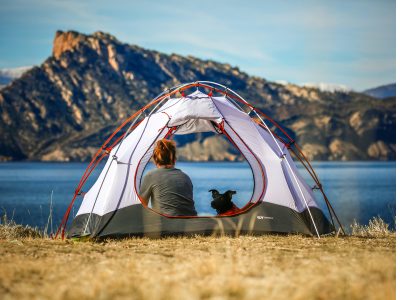
When it comes to sheltering campers from the elements, tents stand as the cornerstone of outdoor accommodation. However, understanding the nuances of tent selection goes beyond merely choosing a roof over one’s head. Here’s a breakdown of what to consider:
Types of Tents Based on Use and Seasonality
Tents come in various shapes and sizes, each designed to cater to specific camping scenarios and environmental conditions. From family-sized cabin tents to lightweight backpacking tents and rugged mountaineering shelters, understanding the intended use and seasonality of a tent is crucial. Factors such as ventilation, insulation, and weather resistance play a significant role in determining the suitability of a tent for different camping environments.
Features to Look For: Material, Weight, Capacity, Waterproofing
When evaluating tents, several key features warrant consideration. Material quality impacts durability and weather resistance, with options ranging from lightweight nylon for backpacking tents to durable polyester for family camping shelters. Weight is a critical consideration for backpackers and adventurers seeking to minimize their pack load, while capacity dictates how many campers a tent can accommodate comfortably. Additionally, waterproofing treatments and seam construction are essential for keeping campers dry during inclement weather.
Alternative Shelter Options: Hammocks, Bivy Sacks, and Tarps
Beyond traditional tents, campers may explore alternative shelter options to suit their preferences and camping style. Hammocks offer a lightweight and versatile alternative for backpackers seeking a comfortable night’s sleep off the ground, while bivy sacks provide compact and minimalist protection for solo adventurers. For those adept at improvisation, tarps offer a customizable shelter solution that can be configured to adapt to varying terrain and weather conditions.
Sleep Systems
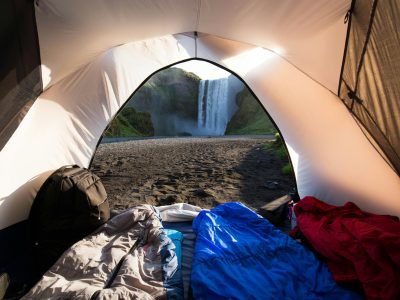
A restful night’s sleep is essential for campers to recharge and rejuvenate during their outdoor adventures. Here’s a comprehensive look at sleep systems and the components that contribute to comfort and warmth:
Understanding Sleeping Bags: Temperature Ratings, Shapes, and Insulation Types
Sleeping bags serve as the primary barrier between campers and the elements, making it crucial to understand their features. Temperature ratings indicate the lowest temperature at which a sleeping bag can keep a camper comfortable, with options ranging from summer bags for warm nights to winter bags for cold conditions. Shapes vary from rectangular bags that offer roominess to mummy-shaped bags that prioritize warmth and weight efficiency. Insulation types, such as down and synthetic fills, affect warmth, weight, and compressibility, with down offering superior warmth-to-weight ratio and synthetic fills performing better in wet conditions.
The Role of Sleeping Pads: Types, R-Value, and Why They’re Necessary
Sleeping pads provide insulation and cushioning to enhance comfort and warmth while sleeping outdoors. They act as a barrier between campers and the cold ground, preventing heat loss and discomfort. Types of sleeping pads include self-inflating foam pads, air pads, and closed-cell foam pads, each offering varying degrees of comfort, insulation, and packability. The R-value measures a pad’s thermal resistance, with higher values indicating greater insulation properties. Sleeping pads are essential for maintaining warmth and comfort during camping trips, especially in cold or rocky terrain.
Accessories for Enhanced Sleep Comfort: Pillows, Liners, and Cot Beds
In addition to sleeping bags and pads, accessories can further enhance sleep comfort in the outdoors. Campers may opt for inflatable or compressible camping pillows to provide neck support and improve overall comfort. Sleeping bag liners offer an extra layer of warmth and cleanliness, prolonging the lifespan of sleeping bags and adding versatility to sleep systems. For those seeking a more elevated sleeping experience, cot beds provide an elevated sleeping surface that mimics the comfort of a traditional bed, ideal for car camping or basecamp setups.
Camping Cookware
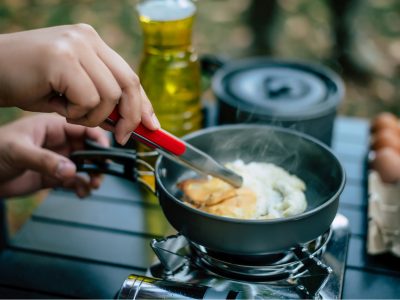
Preparing meals amidst the beauty of nature is a cherished aspect of the camping experience. Here’s a breakdown of the essential gear needed for outdoor cooking:
Stoves: Types and Fuel Considerations
Camp stoves provide campers with a convenient and efficient means of cooking meals in the wilderness. Various types of stoves cater to different camping styles and preferences. Backpackers often opt for lightweight and compact backpacking stoves, which utilize canister, liquid fuel, or alternative fuel sources for cooking on the trail. For car camping or basecamp setups, larger propane or dual-fuel stoves offer greater cooking power and versatility, accommodating larger pots and pans. Considerations such as fuel availability, burn time, and ease of use are crucial when selecting a stove that suits your camping needs.
Cookware Essentials: Lightweight Pots, Pans, and Utensils
Cookware is essential for preparing meals outdoors, allowing campers to cook a variety of dishes with ease. Lightweight pots and pans made from durable materials such as aluminum or stainless steel are ideal for backpackers seeking to minimize pack weight without sacrificing cooking performance. Non-stick coatings facilitate easy cleanup, while foldable or nesting designs optimize packability and storage space. Additionally, a selection of utensils, including spatulas, ladles, and cooking spoons, ensures that campers have the tools they need to create delicious meals in the wilderness.
Importance of Portable Water Purification Systems
Access to clean drinking water is essential for staying hydrated and maintaining health and wellbeing during outdoor adventures. Portable water purification systems provide campers with the means to purify water from natural sources such as streams, rivers, and lakes, ensuring safe drinking water free from harmful contaminants and pathogens. Options include portable water filters, purification tablets, and UV water purifiers, each offering varying levels of filtration and convenience. Investing in a reliable water purification system is essential for staying hydrated and healthy while camping, particularly in remote or backcountry locations where clean water sources may be scarce.
Backpacks
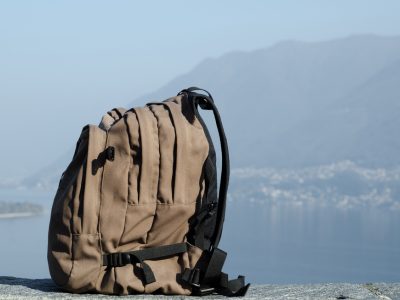
When it comes to exploring the great outdoors, a comfortable and well-fitted backpack is essential for carrying gear efficiently and comfortably. Here’s a closer look at the key aspects of selecting and using backpacks for outdoor adventures:
Types of Backpacks: Daypacks vs. Multi-day Packs
Backpacks come in various styles and sizes, each suited to different types of outdoor excursions. Daypacks are ideal for short hikes or day trips, offering lightweight and compact designs with enough storage space for essentials such as water, snacks, and extra layers. Multi-day packs, on the other hand, are designed for longer adventures, providing ample capacity for carrying gear, clothing, and provisions for extended periods in the wilderness. Understanding the intended use and duration of the trip is crucial for selecting the appropriate backpack style to suit your needs.
Fitting and Sizing: Why It’s Crucial for Customer Satisfaction
Proper fitting and sizing of a backpack are paramount for ensuring comfort and preventing discomfort or injury while hiking. Ill-fitting backpacks can lead to discomfort, chafing, and even musculoskeletal issues, detracting from the overall outdoor experience. Distributors, retailers, and brands should prioritize educating customers on how to properly fit and adjust backpacks to their individual body dimensions, including factors such as torso length, hip belt fit, and shoulder strap adjustments. Offering personalized fitting services and expert advice enhances customer satisfaction and fosters trust in your brand.
Features and Accessories: Hydration Systems, Rain Covers, and Organizational Pockets
In addition to fit and sizing, backpack features and accessories play a significant role in enhancing comfort, convenience, and functionality on the trail. Hydration systems, such as hydration reservoirs and compatible drinking tubes, allow campers to stay hydrated without interrupting their stride. Rain covers protect from inclement weather, keeping gear dry and protected during wet conditions. Organizational pockets, compartments, and attachment points offer versatility for storing and accessing gear, clothing, and accessories efficiently. By offering backpacks with a range of features and accessories, distributors, retailers, and brands can cater to the diverse needs and preferences of outdoor enthusiasts, ensuring that every camper can find the perfect backpack for their adventures.
Lighting
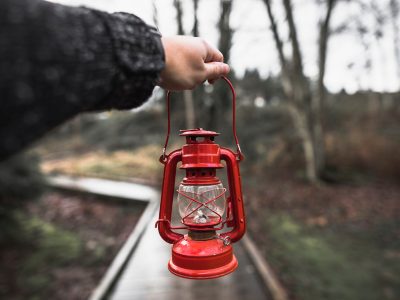
Ensuring visibility and direction are crucial aspects of any outdoor adventure. Here’s a breakdown of the essential lighting gear and navigation tools for campers:
Essential Lighting Gear: Headlamps, Lanterns, and Flashlights
When the sun sets, reliable lighting gear becomes indispensable for campers to navigate and perform tasks in the dark. Headlamps offer hands-free illumination, making them ideal for activities such as cooking, setting up camp, or reading. Lanterns provide ambient light for illuminating larger areas such as tents or campsite surroundings, fostering a cozy atmosphere for socializing or relaxing. Flashlights offer a versatile lighting solution for various tasks, providing focused beams of light for navigation or emergency signaling. Consider factors such as brightness, battery life, and durability when selecting lighting gear to ensure optimal performance in outdoor environments.
Navigation Tools: GPS Devices, Compasses, and Maps
Navigating the wilderness requires the right tools and skills to ensure a safe and enjoyable experience. GPS devices offer precise location tracking and route planning capabilities, allowing campers to navigate with confidence and accuracy. However, it’s essential to carry backup navigation tools such as compasses and maps, as GPS devices may be prone to signal loss or battery failure in remote locations. Compasses provide reliable directional guidance, while topographic maps offer detailed terrain features and landmarks to aid in route finding. Familiarizing oneself with navigation techniques and practicing map and compass skills are essential for navigating safely and effectively in the outdoors.
Safety and Survival Gear
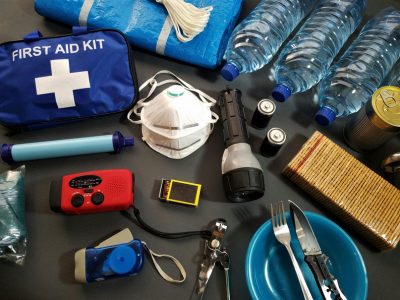
Safety and preparedness are paramount when venturing into the wilderness. Here’s a breakdown of essential safety and survival gear for outdoor enthusiasts:
First Aid Kits: Components and Customization
A well-stocked first aid kit is essential for addressing minor injuries and medical emergencies in the outdoors. Components typically include adhesive bandages, gauze pads, antiseptic wipes, adhesive tape, tweezers, scissors, and pain relievers. Customizing a first aid kit to suit specific activities, environments, and medical needs is crucial for ensuring its effectiveness. For example, hikers may include blister treatment supplies and insect bite relief, while backcountry adventurers may add splinting materials and wound closure strips. Regularly inspecting and replenishing first aid supplies is essential for maintaining readiness and addressing emergent situations effectively.
Survival Tools: Multi-Tools, Fire Starters, and Emergency Shelters
In addition to first aid kits, carrying essential survival tools can greatly enhance preparedness and resilience in the wilderness. Multi-tools, such as Swiss Army knives or multi-functional tools, provide a versatile solution for various tasks such as cutting, slicing, and repair. Fire starters, including waterproof matches, lighters, and ferrocerium rods, offer reliable means of igniting fires for warmth, cooking, and signaling in emergency situations. Emergency shelters, such as lightweight tents, bivy sacks, or emergency blankets, provide protection from the elements and help maintain body temperature during unexpected overnight stays. Including these survival tools in a camping kit ensures that campers are equipped to handle unforeseen challenges and emergencies while outdoors.
Clothing and Footwear
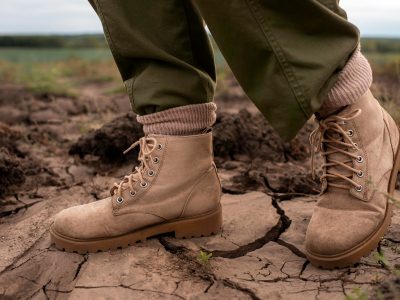
Choosing the right clothing and footwear is essential for comfort, protection, and performance in the outdoors. Here’s a breakdown of key considerations for outdoor apparel and essential footwear options:
Key Considerations for Outdoor Apparel
When selecting outdoor apparel, several key considerations can influence comfort and performance in various outdoor environments. Breathability, moisture-wicking properties, and temperature regulation are crucial for maintaining comfort during physical activity and in changing weather conditions. Fabrics such as merino wool, synthetic blends, and technical fabrics offer moisture management and insulation properties, making them ideal for layering in cold weather or for wicking sweat during warm-weather activities. Additionally, features such as UV protection, abrasion resistance, and quick-drying capabilities enhance durability and versatility for outdoor adventures.
Footwear Essentials: Hiking Boots and Trail Shoes
Footwear plays a vital role in providing support, traction, and protection for outdoor activities such as hiking, backpacking, and trail running. Hiking boots offer ankle support, stability, and protection from rocks, roots, and rough terrain, making them ideal for longer hikes and backpacking trips with heavier loads. Look for features such as waterproof membranes, durable outsoles with aggressive tread patterns, and cushioned midsoles for comfort and support on rugged trails. Alternatively, trail shoes provide a lighter and more agile option for day hikes, fastpacking, or trail running, offering a balance of traction, flexibility, and breathability for dynamic outdoor pursuits. Consider factors such as terrain, activity level, and personal preferences when selecting hiking boots or trail shoes to ensure a comfortable and enjoyable outdoor experience.
Seasonal and Activity-Specific Gear Recommendations
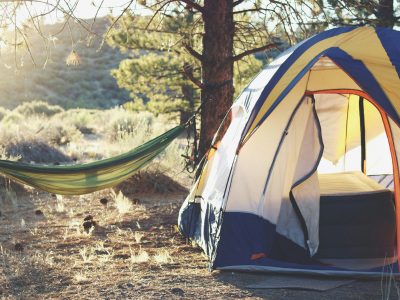
Tailoring inventory to meet seasonal variations and accommodate specific outdoor activities is essential for providing customers with the gear they need to enjoy their adventures to the fullest. Here are some recommendations for seasonal and activity-specific gear:
Tailoring Inventory for Seasonal Variations
Seasonal changes bring shifts in weather conditions and outdoor activities, influencing the types of gear that customers require. In warmer months, prioritize lightweight and breathable apparel, hydration systems, and sun protection gear such as hats and sunglasses. Additionally, camping gear suited for warm weather, such as lightweight tents with ample ventilation and sleeping bags rated for higher temperatures, are in demand. As temperatures drop in colder months, focus on insulating layers, waterproof and windproof outerwear, and gear designed for cold-weather camping, such as four-season tents, insulated sleeping pads, and winter-rated sleeping bags. By anticipating seasonal needs and stocking appropriate gear, distributors, retailers, and brands can ensure that their customers are well-prepared for outdoor adventures year-round.
Specialized Gear for Activities like Climbing, Water Sports, and Winter Camping
Different outdoor activities require specialized gear tailored to the unique demands of each pursuit. For climbing enthusiasts, stock climbing ropes, harnesses, carabiners, and climbing shoes are designed for various disciplines such as sport climbing, trad climbing, or bouldering. Water sports enthusiasts will require gear such as kayaks, paddleboards, personal flotation devices (PFDs), and dry bags for storing essentials. For winter camping and snow sports, offer gear such as insulated jackets, snowshoes, ice axes, and avalanche safety equipment. Additionally, consider accessories and equipment specific to activities such as hiking, backpacking, cycling, and fishing, ensuring that your inventory caters to a wide range of outdoor interests and preferences.
Conclusion
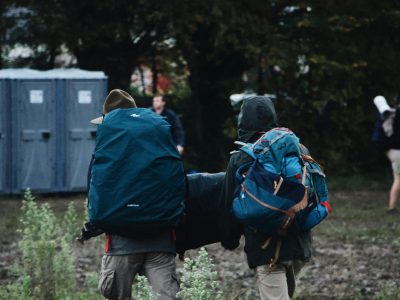
Mastering the essentials of camping gear for retailers is paramount to success in the outdoor retail industry. From stocking high-quality products that cater to diverse customer needs to creating enticing displays and leveraging market trends, retailers play a crucial role in enhancing the outdoor experience for their customers.
As you navigate the world of outdoor retail, I encourage you to continuously explore and expand your inventory based on market demand and customer feedback. By staying attuned to industry trends and customer preferences, you can ensure that your inventory remains relevant and competitive in the ever-evolving outdoor market.
If you’re looking to partner with a manufacturer that can provide all the camping gear essentials for your store, consider reaching out to Outave. Our team is dedicated to providing high-quality products and exceptional service to help retailers thrive in the outdoor industry. Contact us today to explore partnership opportunities and take your outdoor retail business to the next level.


